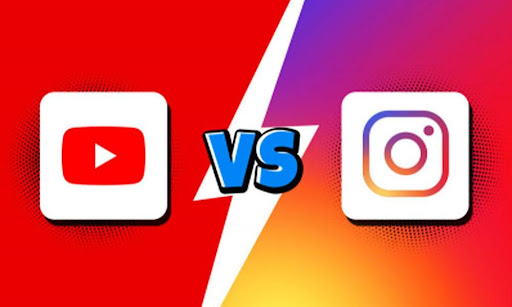In the ever-evolving landscape of digital marketing, businesses are constantly seeking innovative ways to enhance their return on investment (ROI).
As social media platforms like YouTube and Instagram continue to dominate the digital space, marketers are keen to harness their potential to boost brand visibility and drive sales.
One intriguing aspect of this endeavor is the practice of getting more YouTube views, which has gained both proponents and skeptics in recent years.
In this article, we will delve into the intricate world of YouTube and Instagram views, exploring the benefits and pitfalls of buying YouTube views, and providing valuable insights on how to analyze these views to maximize marketing ROI.
Table of Contents
Understanding the Landscape of YouTube and Instagram Views
The Power of Video Content
Video content has become the cornerstone of social media marketing. YouTube, with over 2 billion logged-in monthly users, has emerged as a go-to platform for video sharing.
Instagram, boasting more than a billion active users, offers a different yet equally compelling avenue for sharing video content through its Stories and IGTV features.
Both platforms provide businesses with an opportunity to connect with vast audiences and amplify their messages through visually engaging content.
The Metrics That Matter
When it comes to evaluating the success of video content, views are among the most crucial metrics.
On YouTube, a view is recorded when a user watches a video for at least 30 seconds or when the video is shorter than 30 seconds, and the viewer watches it in its entirety.
On Instagram, a view is counted when a user watches a video for at least 3 seconds. These metrics offer insights into the initial engagement a video generates, serving as a key performance indicator for marketers.
The Controversy of Buying Views
What Does It Mean to Buy YouTube Views?
Buying YouTube views involves paying for a service that artificially inflates the view count of a video. The practice usually entails engaging with third-party providers who employ various techniques to boost view numbers, including automated bots and click farms.
The primary motive behind buying views is to create the illusion of popularity, thereby enticing more organic viewers to click on and engage with the content.
The Pros and Cons of Buying Instagram Views
Proponents of buying Instagram views argue that it can kickstart the viral potential of a video by making it appear more attractive to viewers.
They claim that higher view counts can attract more organic traffic and bolster a video’s search rankings. However, the practice is not without its drawbacks.
Purchased views are often low-quality and lack genuine engagement, potentially harming a video’s credibility and reputation.
Additionally, buying views can violate YouTube’s terms of service, leading to the removal of the video or even the suspension of the channel.
Measuring the Impact of Purchased Views on ROI
Initial Boost vs. Long-Term Gain
One of the key considerations when buying YouTube views is assessing whether the short-term boost in view count translates into a long-term return on investment.
While purchased views can create a momentary surge in visibility, their impact on engagement, conversion, and brand loyalty should be closely monitored.
Metrics such as watch time, likes, comments, and click-through rates (CTR) offer valuable insights into the quality of viewer interaction and the video’s effectiveness in achieving its marketing goals.
Comparing ROI Metrics
To gauge the effectiveness of purchased views, it is essential to compare ROI metrics between videos with bought views and those without.
By analyzing metrics such as sales conversion rates, customer acquisition costs, and customer lifetime value, marketers can determine whether the investment in buying YouTube views is justified.
A positive ROI would indicate that the purchased views contributed to the overall success of the marketing campaign.
The Role of Instagram Views in Marketing ROI
Instagram Views: A Different Perspective
While Instagram views share some similarities with YouTube views, their role in marketing ROI differs slightly due to the platform’s unique features.
Instagram’s Stories, for example, provide a time-limited viewing experience, making it essential for marketers to capture viewers’ attention quickly.
Analyzing the duration of views and the actions taken after viewing a Story can offer insights into its impact on ROI.
Swipe-Up Feature and ROI
Instagram’s Swipe-Up feature in Stories allows businesses to include links that direct viewers to external websites or landing pages.
Measuring the click-through rate from the Swipe-Up feature and tracking subsequent actions, such as purchases or sign-ups, provides a direct link between Instagram views and ROI. Marketers can use this data to fine-tune their content and optimize their ROI.
Best Practices for Analyzing YouTube and Instagram Views
Set Clear Objectives
Before embarking on a marketing campaign that involves buying YouTube views or creating Instagram content, it is crucial to establish clear objectives.
Are you aiming to boost brand awareness, drive website traffic, or increase sales? Defining your goals will guide your view analysis and help you determine the metrics that matter most to your ROI.
Track Comprehensive Metrics
While views are essential, they are just one piece of the ROI puzzle. To gain a comprehensive understanding of your campaign’s performance, track a range of metrics, including watch time, engagement, conversion rates, and revenue generated.
This holistic approach allows you to assess the true impact of your efforts on the bottom line.
Regularly Review and Adjust
Digital marketing is a dynamic field, and consumer behavior evolves rapidly. Regularly review your analytics and adjust your strategy accordingly.
Experiment with different content types, posting schedules, and promotional tactics to optimize your ROI continually.
Conclusion
Analyzing YouTube and Instagram views for marketing ROI is a multifaceted endeavor that requires a deep understanding of these platforms and the metrics that matter most to your business goals.
While the practice of buying YouTube views remains controversial, it can be a tool in your marketing toolkit if used strategically and ethically.
However, it is essential to remember that genuine engagement and long-term brand loyalty should always be the ultimate goals.
By setting clear objectives, tracking comprehensive metrics, and adapting to changing trends, businesses can harness the power of views on YouTube and Instagram to drive a positive return on investment and propel their marketing efforts to new heights.





